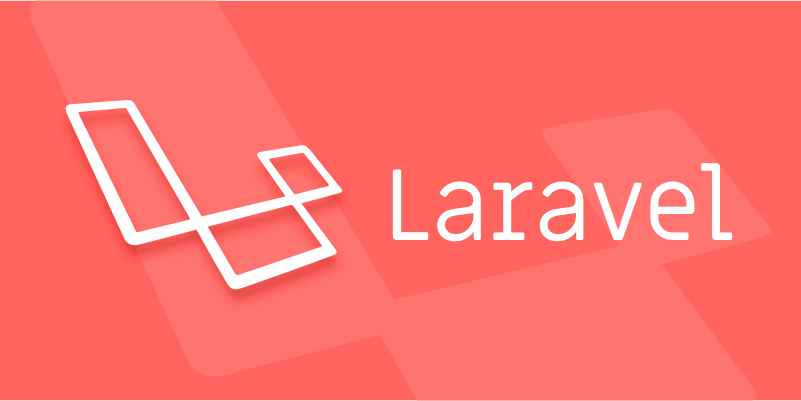Working with Eloquent Query Scopes in Laravel?
Jul 06, 2025 am 12:48 AMEloquent query scope improves code reusability and readability by encapsulating common query conditions, and is divided into local scope and global scope. 1. The local scope is defined in the model and implemented with methods starting with scope. For example, scopeActive() is used to filter and activate users. User::active()->get() is directly used when calling. It supports queries with parameters, such as scopeRole($query, $role) can be used through User::role('admin')->get(). 2. Global scope automatically applies unified filtering rules in all queries by implementing the Scope interface and overwriting the apply method. For example, if the default query user with status active by querying by default, addGlobalScope needs to be registered in the model, or temporarily removed through withoutGlobalScopes(). When using it, you should avoid complex logic, clear naming, and reasonable use of global scope, and ensure effectiveness through testing.

Using Eloquent Query Scopes in Laravel allows you to reuse query logic more gracefully. It is not a master skill, but it can make the code clearer and easier to maintain if used properly.

What is Eloquent query scope?
Eloquent's query scope is essentially an encapsulated query condition that can be attached to the model's query. You can understand it as a "preset filter". For example, you often need to find out all enabled users and write this condition into a scope.

There are two types of query scopes:
- Local Scopes : Methods starting with
scopecan be defined in the model. - Global Scopes : Implement
Illuminate\Database\Eloquent\Scopeinterface, suitable for all queries in the entire model.
How to define and use local query scope?
This is the most common and easiest way to get started. For example, if you want to filter out all "activated" users, you can write it like this in the User model:

public function scopeActive($query)
{
return $query->where('status', 'active');
}Then when calling:
User::active()->get();
You can combine multiple scopes, such as:
User::active()->verified()->orderBy('created_at')->get();
The benefits of this approach are intuitive, readable, and do not require repeating the same where conditions every time.
Tip: If your scope requires parameters, such as filtering users based on roles, you can also add parameters:
public function scopeRole($query, $role) { return $query->where('role', $role); }When using the parameters:
User::role('admin')->get();
Global scope is more suitable for unified filtering rules
If you want certain query conditions to be automatically applied to all queries, such as deleted_at IS NULL in the soft delete mechanism, you can use the global scope.
Creating a global scope requires implementing the Scope interface and overriding the apply method. For example, we want to only display users whose status is active by default:
use Illuminate\Database\Eloquent\Builder;
use Illuminate\Database\Eloquent\Model;
use Illuminate\Database\Eloquent\Scope;
class ActiveUserScope implements Scope
{
public function apply(Builder $builder, Model $model)
{
$builder->where('status', 'active');
}
}Then register this scope in the model:
use Illuminate\Database\Eloquent\Model;
class User extends Model
{
protected static function booted()
{
static::addGlobalScope(new ActiveUserScope());
}
} In this way, every time the User model is queryed where status = 'active' will be automatically added.
Note: If you want to temporarily remove the global scope, you can use:
User::withoutGlobalScopes()->get();
Common misunderstandings and precautions
- Don't put all complex logic into scope : scope is suitable for the conditional splicing of a single responsibility. It is recommended to extract the logic that is too complex and put it in the Repository or Service layer.
- The naming should be clear and concise : for example,
scopeVerified()is obviously easier to understand thanscopeCheckIfEmailConfirmed().- Avoid overuse of global scope : Although it is convenient, it may make it difficult for novices to see why the data is low, which makes it difficult to debug.
- Remember to test whether the scope is effective : especially when multiple scopes are nested or combined, unit testing can help you avoid many hidden problems.
Basically that's it. Query scope is not a must-have feature, but using it in the right place will make your code look more professional and tidy.
The above is the detailed content of Working with Eloquent Query Scopes in Laravel?. For more information, please follow other related articles on the PHP Chinese website!

Hot AI Tools

Undress AI Tool
Undress images for free

Undresser.AI Undress
AI-powered app for creating realistic nude photos

AI Clothes Remover
Online AI tool for removing clothes from photos.

Clothoff.io
AI clothes remover

Video Face Swap
Swap faces in any video effortlessly with our completely free AI face swap tool!

Hot Article

Hot Tools

Notepad++7.3.1
Easy-to-use and free code editor

SublimeText3 Chinese version
Chinese version, very easy to use

Zend Studio 13.0.1
Powerful PHP integrated development environment

Dreamweaver CS6
Visual web development tools

SublimeText3 Mac version
God-level code editing software (SublimeText3)

Hot Topics
 How to test Laravel API interface?
May 22, 2025 pm 09:45 PM
How to test Laravel API interface?
May 22, 2025 pm 09:45 PM
Efficient methods for testing Laravel API interfaces include: 1) using Laravel's own testing framework and third-party tools such as Postman or Insomnia; 2) writing unit tests, functional tests and integration tests; 3) emulating a real request environment and managing database status. Through these steps, the stability and functional integrity of the API can be ensured.
 How to customize Laravel's user authentication logic?
May 22, 2025 pm 09:36 PM
How to customize Laravel's user authentication logic?
May 22, 2025 pm 09:36 PM
Custom Laravel user authentication logic can be implemented through the following steps: 1. Add additional verification conditions when logging in, such as mailbox verification. 2. Create a custom Guard class and expand the authentication process. Custom authentication logic requires a deep understanding of Laravel's authentication system and pay attention to security, performance and maintenance.
 How to create Laravel package (Package) development?
May 29, 2025 pm 09:12 PM
How to create Laravel package (Package) development?
May 29, 2025 pm 09:12 PM
The steps to create a package in Laravel include: 1) Understanding the advantages of packages, such as modularity and reuse; 2) following Laravel naming and structural specifications; 3) creating a service provider using artisan command; 4) publishing configuration files correctly; 5) managing version control and publishing to Packagist; 6) performing rigorous testing; 7) writing detailed documentation; 8) ensuring compatibility with different Laravel versions.
 Laravel integration with social media login (OAuth)
May 22, 2025 pm 09:27 PM
Laravel integration with social media login (OAuth)
May 22, 2025 pm 09:27 PM
Integrating social media login in the Laravel framework can be achieved by using the LaravelSocialite package. 1. Install the Socialite package: use composerrequirelaravel/socialite. 2. Configure the service provider and alias: add relevant configuration in config/app.php. 3. Set API credentials: Configure social media API credentials in .env and config/services.php. 4. Write controller method: Add redirection and callback methods to handle social media login process. 5. Handle FAQs: Ensure user uniqueness, data synchronization, security and error handling. 6. Optimization practice:
 How to implement password reset function in Laravel?
May 22, 2025 pm 09:42 PM
How to implement password reset function in Laravel?
May 22, 2025 pm 09:42 PM
Implementing password reset function in Laravel requires the following steps: 1. Configure the email service and set relevant parameters in the .env file; 2. Define password reset routes in routes/web.php; 3. Customize email templates; 4. Pay attention to email sending problems and the validity period of tokens, and adjust the configuration if necessary; 5. Consider security to prevent brute-force attacks; 6. After the password reset is successful, force the user to log out of other devices.
 Common security threats and protection measures for Laravel applications
May 22, 2025 pm 09:33 PM
Common security threats and protection measures for Laravel applications
May 22, 2025 pm 09:33 PM
Common security threats in Laravel applications include SQL injection, cross-site scripting attacks (XSS), cross-site request forgery (CSRF), and file upload vulnerabilities. Protection measures include: 1. Use EloquentORM and QueryBuilder for parameterized queries to avoid SQL injection. 2. Verify and filter user input to ensure the security of output and prevent XSS attacks. 3. Set CSRF tokens in forms and AJAX requests to protect the application from CSRF attacks. 4. Strictly verify and process file uploads to ensure file security. 5. Regular code audits and security tests are carried out to discover and fix potential security vulnerabilities.
 What is Middleware in Laravel? How to use it?
May 29, 2025 pm 09:27 PM
What is Middleware in Laravel? How to use it?
May 29, 2025 pm 09:27 PM
Middleware is a filtering mechanism in Laravel that is used to intercept and process HTTP requests. Use steps: 1. Create middleware: Use the command "phpartisanmake:middlewareCheckRole". 2. Define processing logic: Write specific logic in the generated file. 3. Register middleware: Add middleware in Kernel.php. 4. Use middleware: Apply middleware in routing definition.
 Laravel Page Cache Policy
May 29, 2025 pm 09:15 PM
Laravel Page Cache Policy
May 29, 2025 pm 09:15 PM
Laravel's page caching strategy can significantly improve website performance. 1) Use cache helper functions to implement page caching, such as the Cache::remember method. 2) Select the appropriate cache backend, such as Redis. 3) Pay attention to data consistency issues, and you can use fine-grained caches or event listeners to clear the cache. 4) Further optimization is combined with routing cache, view cache and cache tags. By rationally applying these strategies, website performance can be effectively improved.






